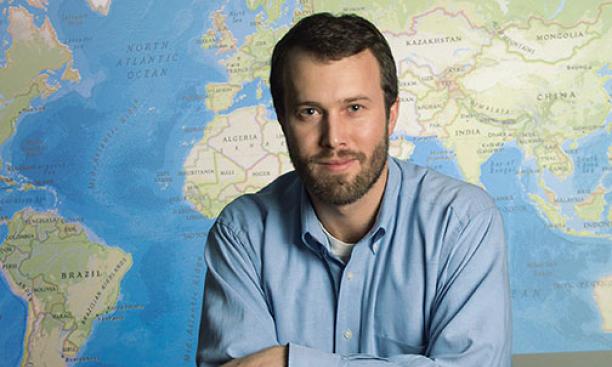

Growing up in Haiti, on the grounds of a hospital where his parents worked as doctors, Philip Eckhoff *09 had malaria 15 times and knew people who died of the disease. Those experiences later sparked his avid interest in malaria and global public health. While he was completing his Ph.D. in applied and computational mathematics at Princeton, he was creating mathematical models to make sense of how malaria is transmitted from mosquitoes to humans. “I have this quantitative tool set and wanted to make an impact on people’s lives,” he says.
Then, in 2007, Intellectual Ventures — a company run by Nathan Myhrvold *83 — recruited him to develop computer models to understand and stem malaria in areas where the disease was prevalent. The disease affects about 207 million people each year, and 627,000 die — of whom about 77 percent are children under age 5.
The team of one has expanded to 37 and today is called the Institute for Disease Modeling (IDM). Now Intellectual Ventures’ IDM also is working to eradicate polio and reduce the number of cases of HIV and tuberculosis. IDM, based in Bellevue, Wash., includes physicists, mathematicians, and engineers.
Among other things, they work to model the course of disease in an individual, determine how to eradicate malaria in a village, and recommend HIV-treatment guidelines to world health organizations. According to Eckhoff, they start with a specific question and then try to identify what is understood and not understood about the problem.
For malaria, biological data on mosquitoes are gathered from entomologists and ecologists, as are patterns of human illness for a given location. Then the team considers prior attempts to prevent and treat the disease, such as the use of drugs and bed netting during field campaigns.
The models are used to predict how the disease will spread in a certain area, for example, or the impact of a treatment. IDM works closely with health organizations and governmental agencies, sharing recommendations and helping them design programs to be implemented in the field.
In Zambia, IDM is working with a division of the country’s Ministry of Health — the National Malaria Control Center — and the Malaria Control and Evaluation Partnership in Africa. These organizations helped suppress malaria by providing protective bed nets and free testing and treatments. Part of IDM’s work, Eckhoff says, involves traveling to remote communities and partnering with community workers going door to door.
IDM modeling helped the organizations to understand why malaria remains high in some areas despite diagnosis and treatment efforts. Based on the IDM models, the organizations have adjusted their treatment approaches in these regions by varying the antimalarial drugs they offer, the treatment schedules, and the times during the year when people are screened.
Eradicating polio worldwide within five years and ending malaria in most countries within 20 to 30 years are realistic goals, Eckhoff says. But he adds that the institute’s work is only part of the solution: “No matter how many times we eradicate malaria or another disease in our simulation models, unless the recommendations are put into practice at the local level, we won’t effect change.”
